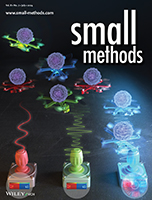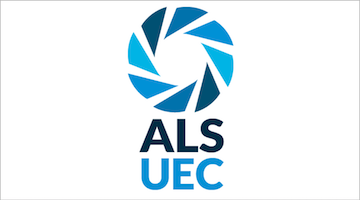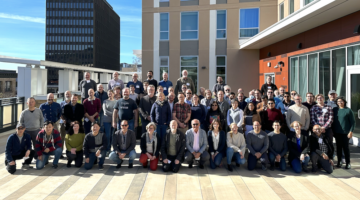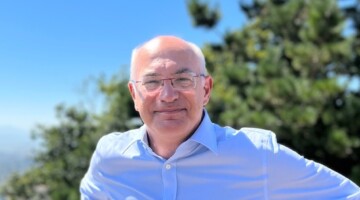Field-driven transport systems offer the possibility of biofunctionalized carriers for microrobotics, biomedicine, and cell delivery. Here, researchers show how magnetic fields may selectively manipulate and drive microrobotics along a patterned micromagnet. Different-sized magnetic carriers move in multiple directions, including selective rotation and bidirectional movement. Such steering systems can direct the delivery of drugs or cells into artificial microvascular channels. Read more »
All News & Updates
Quentin Williams, 2024 Users’ Executive Committee Chair
Living in the Santa Cruz mountains, Quentin Williams spends a lot of time tending to projects on the Earth’s surface, but his professional interests lie thousands of kilometers below. His geosciences research led him to become a long-time user of the ALS, where he is serving as the UEC chair for 2024. Learn more about his work and hear his advice for other ALS users. Read more »
UEC Special Election
In recognition of a lack of representation for the biosciences on the Users’ Executive Committee, a special election was held in accordance with UEC bylaws, and Grant Shoffner was selected to represent the biosciences community for a one-year term (2024).
How Processing Affects Structure in Composite Nanotube Yarns
Using the ALS, researchers found quantitative correlations between processing parameters and the structure of ultrafine, polymer-reinforced carbon-nanotube fibers. The work will facilitate the production of high-strength materials, including those needed for positioning target capsules for fusion research at the National Ignition Facility. Read more »![]()
![]()
Beamline Staff and Partners Continue Science Visioning Discussions
ALS scientific staff and partners held a retreat on January 11 to continue the strategic planning process. Discussions centered around ideas presented at last September’s User Meeting visioning workshops. Stay tuned for the visioning report and ways you can take part in the future of the ALS!
ALS Hosts Facility Directors’ “6-Way” Collaboration Meeting
Last week the ALS hosted directors and staff from the five DOE-BES light sources and, for the first time, the Oak Ridge neutron sources, turning the traditional “5-way” directors’ meeting into a “6-way.” Discussions covered strategic and operational topics of common interest, spanning data and computing, instrumentation, strategic planning, metrics, user processes, and business and administrative practices.
Cobalt or Nickel: Which is Better for High-Energy Battery Cathodes?
High-energy Li-ion batteries can provide both high capacity and high voltage, both of which are important in electric vehicles for greater range and faster acceleration. Here, researchers untangled the contributions of nickel and cobalt in high-energy Li-rich battery cathodes, pointing the way to optimizing them via a compositional approach. Read more »
2024 New Year’s Message from Dimitri Argyriou
ALS Director Dimitri Argyriou has not only settled into life in the Bay Area, he has thrown himself wholeheartedly into the ALS community, meeting and planning with staff, users, and beyond. At every occasion, he has been impressed and excited by their enthusiasm and dedication, which will be crucial for the success of the ALS of the future. Read more »
A Bio-Inspired Metal-Organic Framework for Capturing Wellhead Gases
Burning of natural gas at oil and gas wells, called flaring, is a major waste of fossil fuels and a contributor to climate change. In this work, researchers synthesized and characterized a metal-organic framework that uses biomimetic chemistry to convert wellhead gases into economically valuable feedstocks for petrochemical products. Read more »
Register Your Arrival Date for ALS Access
Reminder! If coming onsite to conduct experiments, you must register your arrival date 3 weeks (U.S. citizens) or 6 weeks (non-U.S. citizens) before your experiment to guarantee access. A calculator is now provided in ALSHub to show you how many weeks in advance you are requesting access. Read more »
- « Previous Page
- 1
- …
- 16
- 17
- 18
- 19
- 20
- …
- 139
- Next Page »








